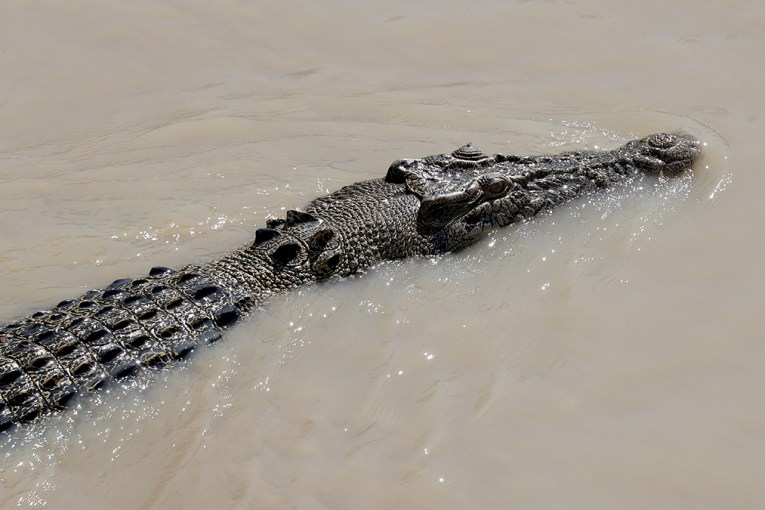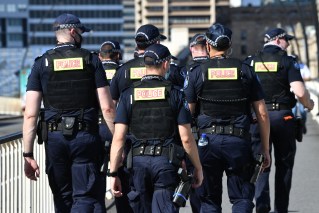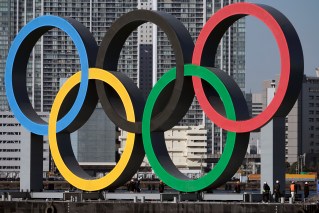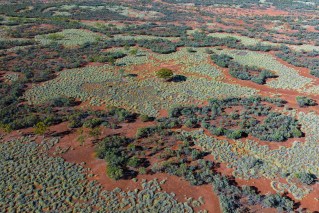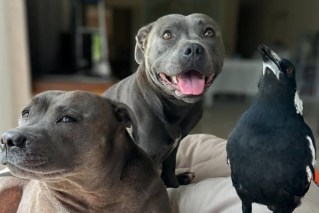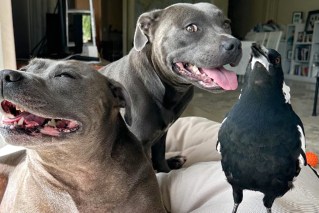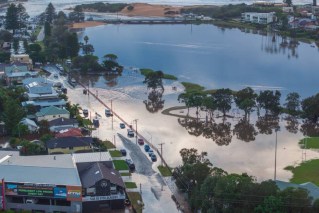Plastic bag found in Sunshine Coast waterway could be up to 40 years old
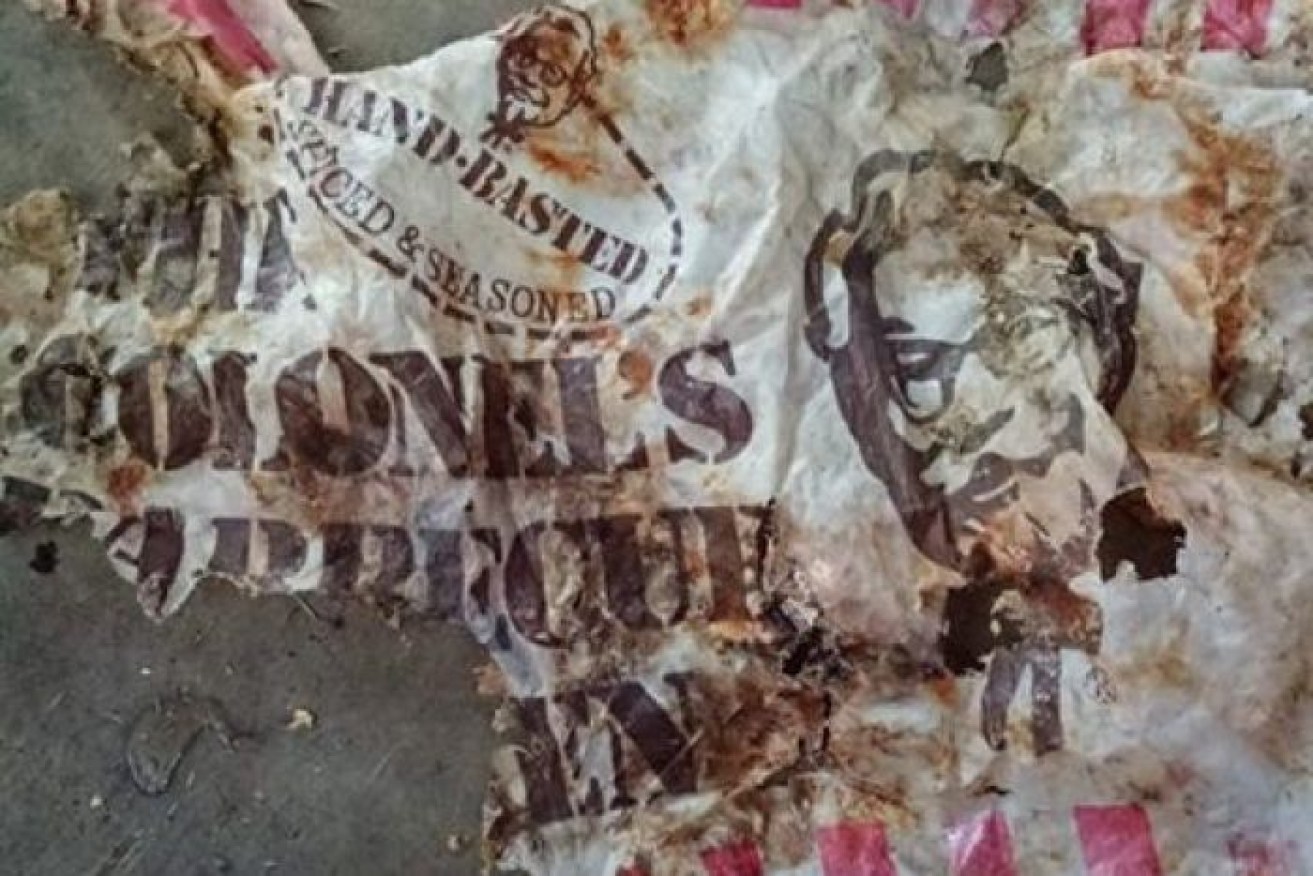
This plastic bag found on the Sunshine Coast is thought to be 30–40 years old. Photo: ABC
Covered in silt and tangled among rocks, a single-use plastic bag found under eight metres of water on Queensland’s Sunshine Coast could be up to 40 years old — and the find is just the tip of the rubbish iceberg.
The KFC bag was discovered by a volunteer group called Sunshine Coast Clean Up Divers (SCCUD) in the Pumicestone Passage at Bulcock Beach, Caloundra, an area known for its sandy beaches and crystal clear waters.
The group’s organiser Elliot Peters said he sent a photograph of the bag to the fast food chain, which estimated it was 30 to 40 years old, based on the logo.

Elliot Peters says discarded fishing items, like these casting nets, are a constant problem in the waterways. Photo: ABC
“It’s hard to say [how long the bag had been there], but obviously you don’t keep a KFC bag lying around and then drop it into the water 40 years later, so it’s obviously been around in the environment somewhere, whether underwater or not,” Mr Peters said.
“Either way, that’s pretty mind-blowing.
“We hear about how long plastics last, especially as microplastics, but for a plastic bag that wasn’t really thick … and still mainly intact and identifiable and 40 years old.”
Since the group of recreational divers began monthly operations in the Pumicestone Passage and the Mooloolah River, they have collected almost 550 kilograms of rubbish from the estuary beds.
While the KFC bag was an unusual find, it was not unprecedented in the state.
Researchers from the University of the Sunshine Coast recently found a 1971 Coles bag amongst mangroves in Moreton Bay.
They also found a Woolworths bag and sarsaparilla can, each thought to be more than three decades old, at Hervey Bay.
Breaking it down
Plastic film — including the remnants of plastic bags — was the third most common kind of litter pulled from Australian waters, according to data collected by the Australian Marine Debris Initiative.
Nationally, volunteers collected 155,000 individual pieces of plastic film in the past year.
More than 640,000 pieces of hard plastic were gathered, along with 213,000 cigarette butts and filters.
Sunlight — or UV radiation — is the key to plastic breakdown, and salt water can have little effect on things like plastic bags, CSIRO principal research scientist Denise Hardesty said.
“Basically the sunlight breaks the bonds of those molecules — the different polymers, the different types of plastic,” Dr Hardesty said.
“For example, [if you have] ever had a plastic chair outside in your garden … as it gets old it kind of flakes off, the little outer bits become really brittle — that’s from the sunlight.
“The plastic is breaking into smaller and smaller pieces, [but] it’s not disappearing.”
The problem with plastic
Almost a year since single-use plastic bags were banned in Queensland, researchers at the University of the Sunshine Coast were working on measuring the impact of the ban across South East Queensland, but that was no simple task.
What is clear is the impact plastic pollution is already having on the environment.

A Woolworths branded plastic bag and soft drink can collected from a Hervey Bay beach are thought to be more than 30 years old. Photo: ABC
Marine biologist Dr Kathy Townsend was part of study, published in the Marine Pollution Bulletin, that found 90 per cent of the plastics ingested by seabirds were 2-10mm long — the most abundant floating litter in the ocean.
“As we can see, plastic debris can last a very long time, increasing the ingestion risk to sea turtles and sea birds,” she said.
Dr Townsend said these findings and earlier studies into the impact of ocean debris on marine life highlighted the need to reduce single-use plastic production and usage, increase recycling and prevent plastic from making its way to the sea.
While the Pumicestone Passage was abundant with “beautiful” marine life, Mr Peters said there were also tyres, car batteries, construction materials, casting nets and the biggest waste problem the divers face — discarded fishing line.
After each dive, the group separated the waste they recovered for reuse and recycling.
Mr Peters estimated they had recovered about 25 kilometres of recreational fishing line in just eight months, collecting between 500 metres to two kilometres on each outing.
“We don’t think it’s people just discarding it, it’s pretty clear usually that it’s from snagging,” Mr Peters said.
Mr Peters hoped greater awareness, and the development of more sustainable fishing products would make a difference in the future.
Zero-waste approach
Sinkers can be melted down, lures can be redistributed to fishers, mobile phones sent off for metal recovery and anything that can be, is recycled.
Creatives were finding unique ways to give other items a new life.
Artist Jo Male crafted ropes, lures and even pieces of crab-pot piping into whimsical one-off jewellery pieces.
“It transforms junk into a unique identity with its own name, story and message about caring for our environment,” Ms Male said.
“Each piece not only challenges our attitudes and actions in relation to our environment, but provides an easy way for the wearer to educate others and simultaneously wear a one-off handmade piece of jewellery.”
Nine-year-old Currimundi schoolgirl Mia Bailey incorporated a casting net pulled from under a jetty into a high-fashion gown she created for the Australian Wearable Art Festival.
With the help of her mother Nena Bailey, Mia used chip packets, tarp, fabric scraps, plastic bottles and even thongs, to create fashion from rubbish.
“We wanted to do it because we wanted to save our ocean, because all this generation’s got to help pick up all the rubbish,” Mia said.
“So for all our generation, the ocean’s being saved, because so far the ocean’s got really terrible stuff in it.”
